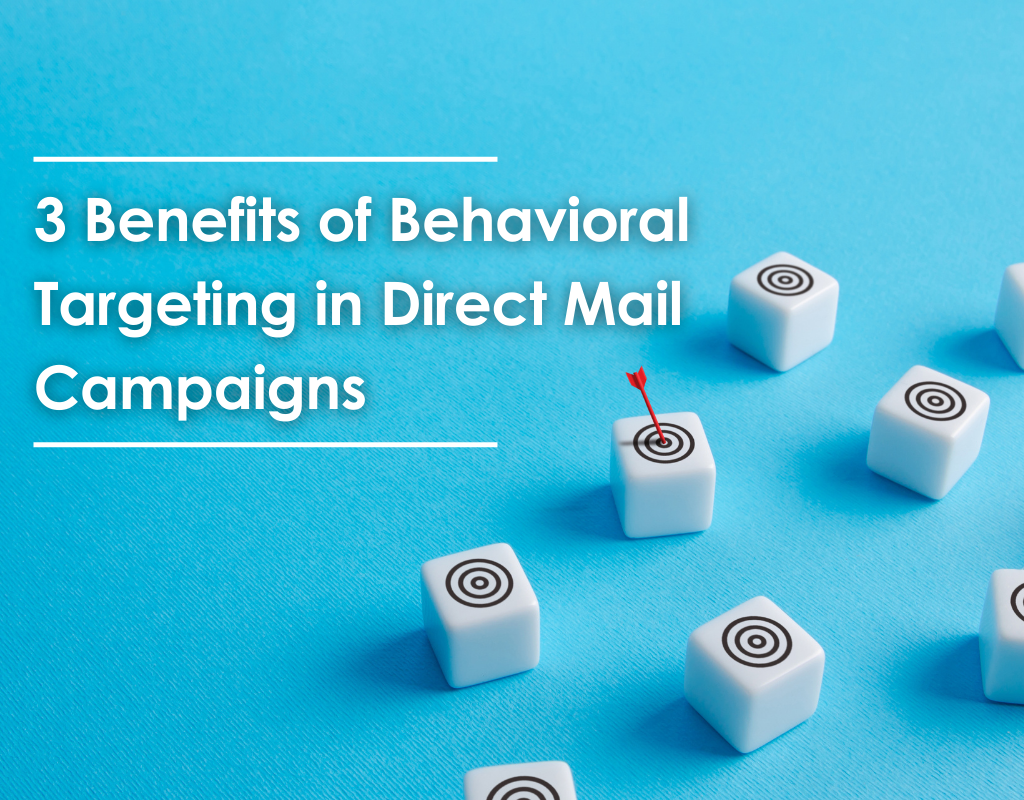Author: Camille Lehmann, Senior Marketing Specialist
If you’ve been in the direct marketing industry for any period of time, you’ve undoubtedly heard that data is a key driver of results. Better yet, highly targeted data. But this may leave marketers with the question – What kind of data should I use? The answer largely depends on your direct mail campaign history. Have you sent campaigns before, and do you have customer response data? If the answer is no, the first step is to begin with demographic targeting to be able to later use behavioral targeting for improved results in subsequent campaigns.
So what’s the difference between demographic targeting and behavioral targeting and how do you use them to increase your direct mail ROI?
Demographic Targeting Vs. Behavioral Targeting
Demographic targeting uses information such as age, gender, geographic location, income, and vocation to target an audience. While there are hundreds of additional data points available for use, the first time a brand mails, these are often the only data points available, since there is no previous response data. Demographic data is frequently used to create a predictive Lookalike (or Profile) Model as a first step to predict those most likely to respond. It is not ideal, as it is simply not as powerful as analytic tools that utilize past behavior. After enough initial responders are gathered, strategists and analysts use this information to learn which people have an affinity for the product and are likely to respond via direct mail. If creative tests were done, we gain insight into which type of creative copy and formats appeal to responders. The response data is used to build a more sophisticated response model, which utilizes both demographic and behavioral data. It is based on the principle that past behavior indicates and is predictive of future behavior. We then implement behavioral targeting in the next campaign and beyond.
Behavioral targeting and analytics use a brand’s own data, usually in the form of direct mail response and corresponding purchase data for better acquisition results. Marketers must consider how they will capture and measure response, so that information can be used to inform future decisions, making behavioral targeting more successful. Examples of this include using custom QR codes, a personal URL only for that campaign, a 1-800 number, or promotional codes unique to each campaign file.
“By utilizing data across sources, we can identify highly predictive data elements—leading to greater response and conversion results.”
-Alan Sherman, VP Marketing Strategy
Once you acquire behavioral data, why should you consider using behavioral targeting in your next campaign?
Benefit #1: Advertise to Consumers Likely to Engage
When you target behaviorally, you are analyzing the behavior of past responders and using that behavior to find more consumers like them. Targeting likely responders means better results.
Benefit #2: Print Less, Spend Less
Using behavioral targeting is more cost-effective when the data is available. The more targeted your audience becomes, the smaller it gets. With rising paper and postage costs, a smaller, but more responsive audience becomes more efficient to reach, both from financial and environmental perspectives.
Benefit #3: Greater Marketing ROI
While your audience is smaller, it is also more responsive. No longer is money spent on people who have less interest in what you are selling. The combination of spending less on materials and having a more responsive pool equals a greater ROI.
We’re data experts at Nahan with access to more than 20 of the best data sources comprising over 25,000 data points. Our decades of experience paired with the amazing partners we work with, means you get service that can’t be beat. We’d love to help you reach your audience the best way possible with your direct mail campaign. Contact us today to find out how we can help you increase your ROI.
A Guide to Direct Mail Testing Today

Testing is a key component of any successful direct marketing program. The most impactful direct mail marketers are constantly testing creative, lists, and offers, which enables them to make marketing decisions armed with more insight.
We have found that testing means different things to different people. Clients approach it in a variety of ways.
In this white paper, we provide an insiders guide to effective direct mail testing for programs of all sizes and across industries. It doesn’t matter if you’re just getting started with testing or a seasoned pro, our guide will provide you with actionable insights you can implement today.
Learn how the four phases of the testing process work together to drive optimization.
- Research
- Pre-Testing
- Testing
- Post-Campaign Assessment
If you’re ready to test smarter and drive ROI for your program, fill out the form below for the full guide to direct mail testing today!



